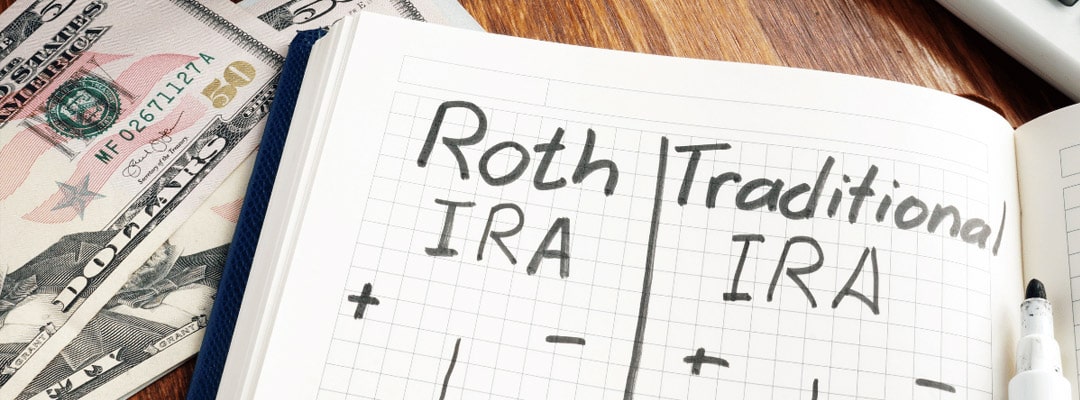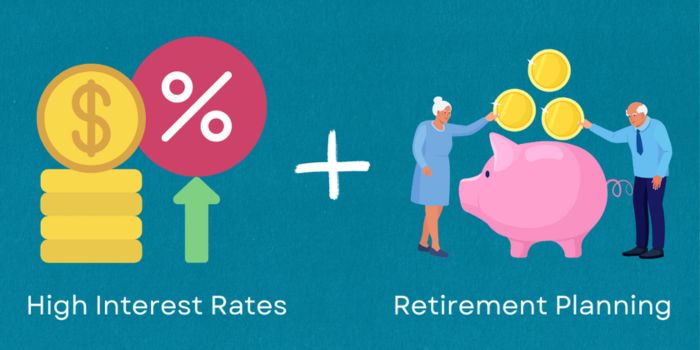Need a retirement strategy? This guide helps you set goals, choose advisors, and invest wisely, even in today’s high interest rate environment. Discover how high interest rates can impact your plan and learn strategies for effective diversification. By the end, you’ll have a comprehensive strategy for navigating these challenges and achieving financial success!
Be sure to calculate your retirement score today with the Institute of Financial Wellness (IFW), as well as visit our site to learn about all-things retirement!
Key Takeaways
- Establishing clear retirement goals is fundamental for financial security, especially when navigating today’s high interest rate environment. It allows for informed savings and investment decisions tailored to individual aspirations and helps you adapt to changing economic conditions.
- High interest rates present both challenges and opportunities for retirees, requiring a reassessment of investment strategies to capitalize on fixed-income options.
- Choosing the right financial advisor and regularly consulting with one, as well as making necessary adjustments to retirement strategies is essential for adapting to changing financial circumstances and achieving retirement objectives.
Begin planning your retirement roadmap with IFW today!
Understanding Retirement Goals

Imagine living comfortably, maintaining your current lifestyle without the constant worry of outliving your savings account!
Many experts suggest that individuals may need up to 80% of their pre-retirement income to maintain their standard of living after retiring [1]. Setting specific goals helps make informed decisions about saving and investing, leading to a more stable and enjoyable retirement.
On the same note, selecting the right financial advisor plays a significant role in this process.
It’s not just about finding someone who knows the numbers but someone who understands your personal financial situation and retirement aspirations. A financial advisor with a holistic approach can integrate various aspects of your finances, including investments, debt management, and risk tolerance, ensuring your retirement plan is well-rounded and robust.
Before you even search for an advisor, identify your specific financial needs to ensure they provide relevant services.
Evaluating Retirement Strategies

Once your goals are set, the next step involves evaluating the various retirement savings vehicles available. Choosing the right retirement accounts is pivotal due to their different benefits and tax advantages.
Regular contributions to 401(k)s and IRAs benefit from compound interest and tax advantages, significantly boosting your retirement savings over time. Understanding these options helps craft an investment strategy that aligns with your retirement goals.
401(k) Plans

A 401(k) investment plan is one of the most popular employer-sponsored retirement savings vehicles, allowing you to contribute a portion of your paycheck directly into the account.
For 2024, the contribution limit is set at $23,000, with an increased limit of $30,500 for those over 50. Contributions are made with pre-tax dollars, reducing your taxable income for the year, a significant advantage for your personal finance.
Additionally, Roth 401(k) plans are available, where contributions are made with after-tax dollars, offering tax-free withdrawals during retirement.
IRA Options

Individual Retirement Accounts (IRAs) provide another essential avenue for retirement savings. A traditional IRA allows for pre-tax contributions, growing tax-free until withdrawal, though early withdrawals may incur taxes and penalties.
Roth IRAs, on the other hand, offer tax-free withdrawals during retirement since contributions are made with after-tax money.
For 2024, the maximum annual contribution to a Roth IRA is $7,000 for those under 50. Spousal IRAs and Rollover IRAs offer additional flexibility, allowing non-working spouses to contribute or transferring funds from other retirement accounts.
Employer-Sponsored Plans
Beyond 401(k)s, other employer-sponsored plans like 403(b) and 457(b) are worth considering. 403(b) plans, common among public sector employees, allow for pre-tax contributions, reducing taxable income.
Also, the Thrift Savings Plan (TSP), designed for government employees, offers a range of investment options similar to a 401(k), including bond funds and S&P 500 index funds.
Grasping the features and benefits of these plans aids in making informed decisions about your retirement savings strategy.
Navigating High Interest Rates

In the current economic climate, interest rates ranging from 5.25% to 5.5% present both challenges and opportunities for those approaching retirement.
One advantage of high interest rates is the potential for generating more income from fixed-income investments. Certificates of deposit (CDs) now offer rates exceeding 5%, providing a safe and attractive investment option for retirees at a bank or credit union. Similarly, Treasury bills (T-bills) are yielding competitive rates, making them suitable for short-term savings.
However, high interest rates do necessitate a reassessment of your retirement portfolio.
Shifting towards bonds and money market accounts can offer better returns and stability. This is an opportune time to lock in profits from equities at current high rates before transitioning to a more conservative investment strategy.
High interest rates should not solely dictate your retirement decisions, but they play a significant role in shaping your investment strategy and financial institution security.
Diversifying Your Portfolio

Diversification is a key principle in managing retirement savings. Spreading investments across various asset classes such as stocks, bonds, and real estate helps mitigate risks and enhances the potential for achieving financial objectives.
Diversified portfolios can better withstand market fluctuations, as losses in one area can be offset by gains in another, stabilizing overall performance. This approach is essential for protecting your retirement savings from unpredictable market conditions and ensuring long-term financial security.
Asset Allocation Strategies

Asset allocation strategies should be tailored to your risk tolerance and time horizon. Younger investors might favor a higher allocation of stocks to capitalize on growth potential, while those nearing retirement should shift towards more conservative investments like bonds.
Adjusting the mix of assets according to your age and risk tolerance balances growth opportunities with the need to preserve capital as retirement nears.
Rebalancing Your Portfolio
Regularly rebalancing your portfolio is crucial to maintaining your desired asset allocation.
Significant market movements can skew your investment proportions, necessitating adjustments to stay on track with your long-term financial goals.
Rebalancing generally involves selling overrepresented assets and purchasing underrepresented ones, ensuring your portfolio reflects your investment strategy and risk tolerance. For those nearing retirement, increasing allocation in stable assets like bonds and cash equivalents can minimize risk.
Maximizing Tax Advantages

Taking full advantage of tax benefits is a crucial aspect of retirement planning.
Different retirement savings vehicles offer varying tax treatments, contribution limits, and employer involvement. For instance, the maximum annual contribution to an IRA in 2024 is $7,000, with an additional $1,000 catch-up contribution for those over 50 [2].
Choosing to live in a state with no income tax can also significantly reduce your tax liabilities on retirement income.
Additionally, delaying Social Security benefits past retirement age, such as 70, can increase monthly payments and potentially reduce tax liabilities. The taxable amount of Social Security benefits can vary based on other income, making the timing of withdrawals critical.
Tax-Free Accounts

Utilizing tax-free accounts can significantly enhance your retirement savings.
Roth IRAs, for example, offer tax-free growth because contributions are made with after-tax dollars, and withdrawals in retirement are tax-free. Unlike Traditional IRAs, Roth IRAs do not require minimum distributions during the account holder’s lifetime, which can be beneficial for long-term tax planning.
Health Savings Accounts (HSAs) also provide tax-free growth and can be used beyond medical expenses, including retirement savings. These tax-free accounts enable growth without tax burdens during the accumulation phase, allowing for tax-free withdrawals in retirement, offering significant tax advantages.
Timing Withdrawals

Strategically timing withdrawals from an individual retirement account helps avoid unnecessary taxes and penalties.
Proper timing can help minimize taxable income during retirement and maximize the benefits of your retirement savings vehicles. By carefully planning when to start taking distributions, you can effectively reduce your tax liabilities.
For example, postponing required minimum distributions (RMDs) can be advantageous if funds are directed to charity.
This strategic approach to withdrawals ensures better financial management and maximizes the longevity of your retirement savings.
Planning for Healthcare Costs

Healthcare costs can be a significant burden in retirement, consuming a large portion of your savings. Medicare typically covers about two-thirds of medical costs, leaving retirees responsible for the remaining expenses.
For a couple retiring at age 65, healthcare expenses can consume approximately 70% of their lifetime Social Security benefits.
In 2024, the monthly premium for Medicare Part B is set at $174.70, with additional costs based on income. Most individuals qualify for premium-free Part A if they or their spouse have paid Medicare taxes for at least ten years.
Retirees are advised to keep several years’ worth of expenses in cash or cash equivalents to manage unexpected costs.
Medicare Basics

Medicare is the primary healthcare coverage for retirees, consisting of Parts A and B, which cover hospital stays and medical services respectively.
However, it does not cover dental, vision, hearing care, or long-term care.
Enrollment in Medicare typically occurs during a seven-month period surrounding an individual’s 65th birthday.
Understanding what Medicare covers and planning for additional healthcare needs is essential for comprehensive retirement planning.
Long-Term Care Insurance

Long-term care insurance is a critical component of retirement planning, providing coverage for services not typically covered by Medicare. A couple aged 65 may pay an average annual premium of approximately $9,675 for a policy providing a benefit of $165,000.
When selecting a policy, consider factors such as benefit amounts, coverage duration, and types of services included. It’s also important to ensure that benefit payments can increase over time to keep pace with inflation.
Customizing a long-term care policy to match individual needs can offer greater protection and financial security.
Creating a Withdrawal Strategy

A sustainable withdrawal strategy ensures your retirement savings last throughout your retirement years. This strategy balances the need for current income with the necessity of preserving funds for the future.
Consulting a financial advisor can provide tailored guidance, addressing your individual financial circumstances and enhancing your retirement planning.
A successful withdrawal strategy involves understanding different methods and choosing the one that best suits your financial situation. The 4% rule, for instance, suggests withdrawing 4% of your portfolio in the first year of retirement, adjusting this amount for inflation in subsequent years to provide a sustainable income for approximately 30 years.
Dynamic withdrawal strategies, on the other hand, adjust annual spending based on market performance, allowing for more flexibility in spending during fluctuating market conditions. Both approaches aim to maintain financial stability throughout retirement.
The 4% Rule
The 4% rule is a widely recognized strategy for sustainable withdrawals from retirement savings. Established in 1994, it suggests withdrawing 4% of your retirement savings in the first year, then adjusting the amount for inflation in subsequent years. This method is designed to provide a steady income stream while minimizing the risk of depleting your savings too quickly.
Adhering to this rule allows retirees to enjoy a predictable income while ensuring their funds last for approximately 30 years.
Dynamic Withdrawal Strategies
Dynamic withdrawal strategies offer a more flexible approach, adjusting the amount withdrawn based on market performance and individual financial needs. These strategies allow retirees to increase or decrease withdrawals in response to changing economic conditions, providing greater adaptability.
Aligning withdrawals with the performance of retirement accounts helps better manage income and maintain financial security during fluctuating market conditions.
Protecting Against Market Volatility

Market volatility can significantly impact retirement savings, making it essential to have strategies to protect your investments. An emergency fund acts as a financial safety net, allowing you to handle unexpected expenses without relying on your investment accounts. This fund helps avoid selling investments at unfavorable prices during market downturns, providing peace of mind and financial stability.
Building a sufficient emergency fund to prepare for economic fluctuations is a crucial aspect of retirement planning.
Safe Investment Options
Safe investment options are vital for preserving retirement savings amidst market volatility. Treasury securities are considered among the safest investments because they are backed by the U.S. government, minimizing the risk of loss. Certificates of Deposit (CDs) are low-risk investments that offer guaranteed fixed interest rates and are protected by FDIC insurance.
Annuities provide a reliable income stream in exchange for an upfront investment, making them a low-risk option for retirement savings. Bonds and CDs are also considered safe investments due to their lower risk compared to stocks.
Emergency Fund

Maintaining an emergency fund is crucial for retirees, providing a financial buffer for unexpected expenses without jeopardizing retirement savings. This fund helps cover unexpected costs, preventing the need to tap into retirement accounts and ensuring financial security in times of need.
Meeting with a Financial Advisor

Consulting a financial advisor is essential for tailoring your retirement strategy to fit your unique financial situation and goals. The IFW Retirement Roadmap Experience provides an excellent starting point, offering a complimentary assessment of your current retirement score and discussing strategies to boost it. During the introductory call, you’ll provide basic information and your goals, without needing to divulge sensitive details.
Consulting with an IFW Certified Financial Professional can significantly enhance your retirement planning by addressing individual financial circumstances and providing expert guidance.
Choosing the Right Advisor
Choosing the right financial advisor is crucial for effective retirement planning. Look for advisors with fiduciary duties, as they are legally obligated to act in your best interests.
Opting for a fee-only fiduciary advisor ensures that the advice you receive is unbiased and prioritizes your best interests. This approach helps you feel confident in your retirement strategy and financial decisions.
Regular Reviews

Regularly reviewing your retirement plans with a financial advisor helps adapt to changing financial circumstances and market conditions. Ongoing consultations ensure that your retirement strategies remain aligned with evolving personal goals and unexpected life events.
Regular reviews help maintain the effectiveness of your investment strategy and financial security throughout retirement.
Summary
In summary, navigating your retirement strategy in a high-interest-rate environment involves:
- Setting clear goals
- Evaluating different retirement savings vehicles
- Diversifying your portfolio
Maximize tax advantages by utilizing tax-free accounts and timing your withdrawals strategically.
Plan for healthcare costs and consider long-term care insurance to protect your savings.
Create a sustainable withdrawal strategy and protect against market volatility by maintaining an emergency fund and investing in safe options.
Meeting with a financial advisor can provide personalized guidance, ensuring your retirement plan is robust and aligned with your goals. Take these steps to secure a comfortable and financially stable retirement.
Frequently Asked Questions
What is the first step to get your IFW Retirement Score?
The first step to obtain your IFW Retirement Score is to sign up for the complimentary IFW Retirement Roadmap Experience. This will provide you with a comprehensive assessment of your retirement readiness.
What is the 4% rule in retirement planning?
The 4% rule posits that retirees can withdraw 4% of their investment portfolio in the first year, adjusting for inflation thereafter, to sustain their income for roughly 30 years. This approach offers a framework for ensuring financial security in retirement.
How can I minimize tax liabilities during retirement?
To minimize tax liabilities during retirement, consider strategically timing withdrawals from retirement accounts and utilizing tax-free options like Roth IRAs. This approach can help you manage your taxable income effectively and avoid early withdrawal penalties.
Why is diversification important in a retirement portfolio?
Diversification is crucial in a retirement portfolio as it mitigates risk and enhances the potential for achieving financial goals by spreading investments across various asset classes. This strategy helps protect your savings from market volatility.
What are some safe investment options for retirees?
For retirees, safe investment options include Treasury securities, Certificates of Deposit (CDs), annuities, and bonds, as they offer stability and reduced risk. These choices can help ensure a reliable income while protecting capital.




